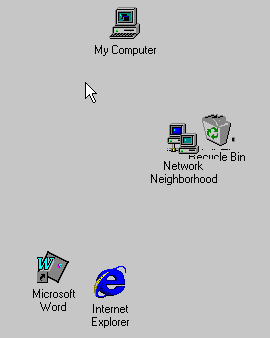|
When a file that is infected
by W32.Magistr.24876@mm is executed, it searches in memory
for a readable, writable, initialized section inside the memory
space of Explorer.exe. If one is found, a 110-byte routine
is inserted into that area, and the TranslateMessage function
is hooked to point to that routine. This code first appeared
in W32.Dengue.
When the inserted code gains
control, a thread is created and the original TranslateMessage
function is called. The thread waits for three minutes before
activating. Then the virus obtains the name of the computer,
converts it to a base64 string, and depending on the first
character of the name, creates a file in either the \Windows
folder, the \Program Files folder, or the root folder. This
file contains certain information, such as the location of
the email address books and the date of initial infection.
Then it retrieves the current user's email name and address
information from the registry (Outlook, Exchange, Internet
Mail and News), or the Prefs.js file (Netscape). The virus
keeps in its body a history of the 10 most recently infected
users, and these names are visible in infected files when
the virus is decrypted. After this, the virus searches for
the Sent file in the Netscape folder, and for .wab, .mbx,
and .dbx files in the \Windows and \Program Files folders.
If an active Internet connection
exists, the virus searches for up to five .doc and .txt files
and chooses a random number of words from one of these files.
These words are used to construct the subject and message
body of the email message. Then the virus searches for up
to 20 .exe and .scr files smaller than 128 KB, infects one
of these files, attaches the infected file to the new message,
and sends this message to up to 100 people from the address
books. In addition there is a 20-percent chance that it will
attach the file from which the subject and message body was
taken, and an 80-percent chance that it will add the number
1 to the second character of the sender address. This last
change prevents replies from being returned to you and possibly
alerting you to the infection.
After the mailing is done, the
virus searches for up to 20 .exe and .scr files, and infect
one of these files. Then there is a 25-percent chance, if
the Windows directory is named one of the following:
- Winnt
- Win95
- Win98
- Windows
that the virus will move the
infected file into the \Windows folder and alter the file
name slightly. Once the file is moved, a run= line is added
to the Win.ini file to run the virus whenever the computer
is started. In the other 75 percent of cases, the virus will
create a registry subkey in
HKEY_LOCAL_MACHINE\SOFTWARE\Microsoft\Windows\CurrentVersion\Run
The name of this subkey is the
name of the file without a suffix, and the value is the complete
file name of the infected file. The virus then searches all
local hard drives and all shared folders on the network for
up to 20 .exe and .scr files to infect, and add the run= line
if the \Windows folder exists in that location.
For files that are infected
by W32.Magistr.24876@mm, the entry point address remains the
same, but up to 512 bytes of garbage code is placed at that
location. This garbage code transfers control to the last
section. A polymorphic encrypted body is appended to the last
section. The virus is hostile to debuggers and will crash
the computer if a debugger is found.
If the computer has been infected
for one month and at least 100 people have been sent an infected
file, and if at least three files contain at least three examples
from the following list:
sentences you
sentences him to
sentence you to
ordered to prison
convict
, judge
circuit judge
trial judge
found guilty
find him guilty
affirmed
judgment of conviction
verdict
guilty plea
trial court
trial chamber
sufficiency of proof
sufficiency of the evidence
proceedings
against the accused
habeas corpus
jugement
condamn
trouvons coupable
a rembourse
sous astreinte
aux entiers depens
aux depens
ayant delibere
le present arret
vu l'arret
conformement a la loi
execution provisoire
rdonn
audience publique
a fait constater
cadre de la procedure
magistrad
apelante
recurso de apelaci
pena de arresto
y condeno
mando y firmo
calidad de denunciante
costas procesales
diligencias previas
antecedentes de hecho
hechos probados
sentencia
comparecer
juzgando
dictando la presente
los autos
en autos
denuncia presentada
then the virus will activate
the first of its payloads. This payload is similar to that
of W32.Kriz, and it does the following:
- Deletes the infected file
- Erases CMOS (Windows 9x/Me
only)
- Erases the Flash BIOS (Windows
9x/Me only)
- Overwrites every 25th file
with the text YOUARESHIT as many times as it will fit in
the file
- Deletes every other file
- Displays the following message:

- Overwrites a sector of the
first hard disk
This payload is repeated infinitely.
If the computer has been infected
for two months, then on odd days the desktop icons are repositioned
whenever the mouse pointer approaches, giving the impression
that the icons are "running away" from the mouse:

If the computer has been infected
for three months, then the infected file is deleted.
For files that are infected
by W32.Magistr.24876@mm, the entry point address remains the
same, but up to 512 bytes of garbage code is placed at that
location. This garbage code transfers control to the last
section. A polymorphic encrypted body is appended to the last
section. The virus is hostile to debuggers and will crash
the computer if a debugger is found.
|
